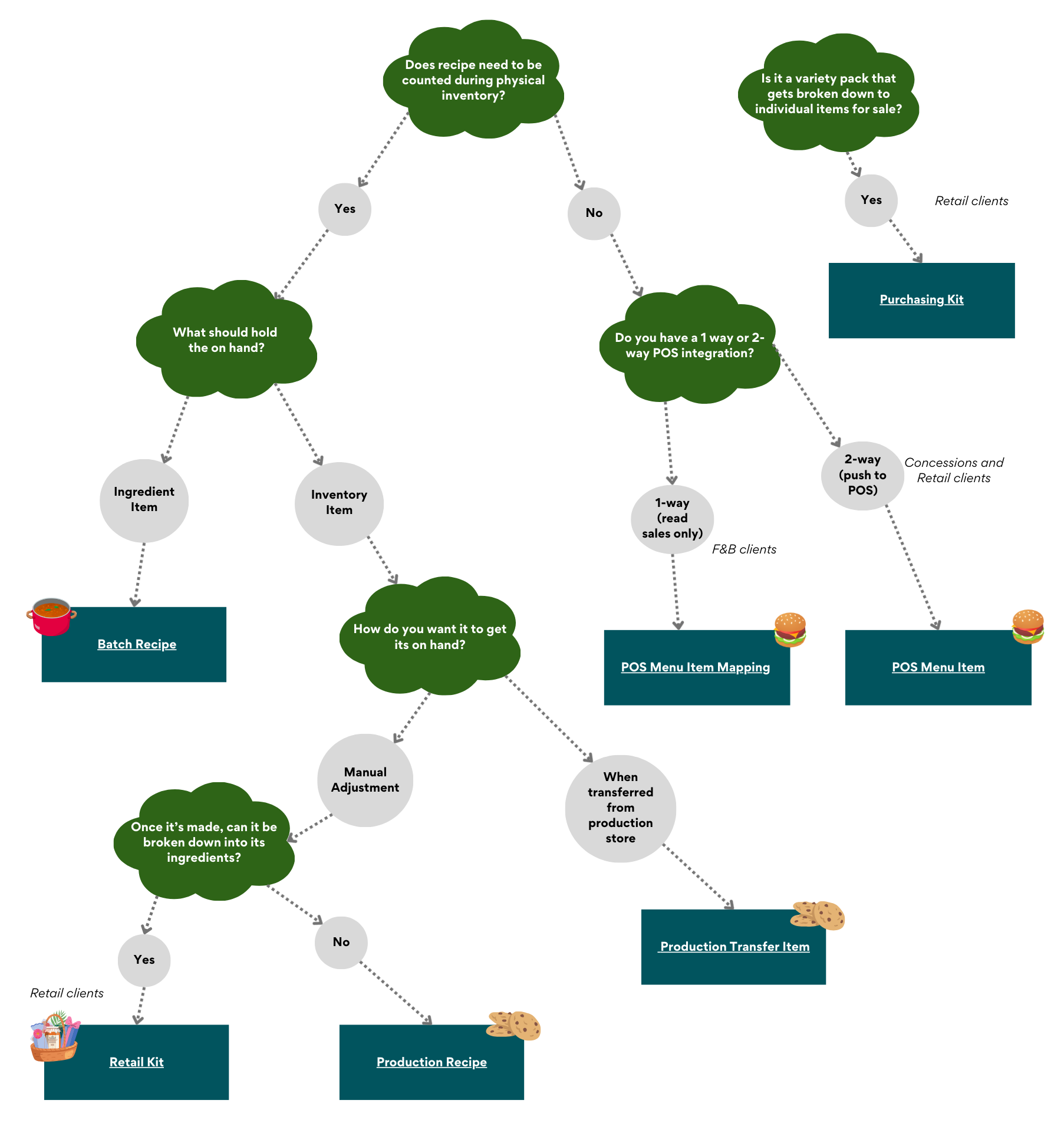Recipe Behavior Flow Chart

Related Articles
Recipe User Guide
What is a Recipe? This document will provide a comprehensive overview of the Recipe Module in Yellow Dog. Let’s start with the basics – What is a Recipe? A recipe is a group of items that are combined to be sold as a single item in the Point of Sale. ...
How To: Create a Batch Recipe Item
The purpose of creating batch recipe items is so prepped items can be counted in physical inventories. Batch recipe items will behave in the following way: Will NOT hold an on-hand. The recipe ingredients will hold on-hands. Can be added to a Manual ...
How To: Create a Production Recipe Item
The purpose of creating production recipes items is so they can be counted in physical inventories and on-hands of the item can be tracked. Production recipe items behave in the following way: Will hold an on-hand. A manual adjustment is required ...
Can I sell items by weight?
Issue: You have deli items that are sold by weight and want the items on hand on to deduct appropriately when sold at the point of sale. An example would be Chicken Salad. Resolution: Use the Calculate Qty by Retail function. This configuration ...
Why are my Recipe Cost & Suggested Retail not displaying data?
Issue: Cost and Retail shown in editor but not in recipe list. Cause: The procedure within the software that calculates the average cost & suggested retail looks to find all the stores where ALL ingredients are available to the store. This slice of ...
Popular Articles
How To: Find Your Yellow Dog Inventory Version
Understanding which version of Yellow Dog Inventory you're using is essential when exploring new features, as some enhancements and functionalities are specific to certain versions. All client types can benefit from knowing their Yellow Dog Inventory ...
How do I use Par & Re-Order Points?
What is a Reorder Point? The minimum quantity you would like inventory of the item to be before ordering more. Items must go below this level to trigger reorder. Items set to 0 will not reorder until you go into negative stock. This is not ...
Tips & Tricks: How do I download and install drivers for my Zebra Printer?
**As a note: Admin rights will be required to complete this task. If you do not have admin rights on your PC, please contact your IT for assistance** ZD410 Desktop Printer Support Site 1. Navigate to Drivers: 2. Select Zdesigner V. 5 Driver for ...
How To: Swap the On-Hand/Parent Size (Edit Base Unit)
When managing items with multiple sizes, it’s essential to configure them correctly. The on-hand/parent size should always represent the base unit or smallest measurement, while additional sizes should be created for purchasing or counting sizes. If ...
What are Bins and how can I use them?
Bins are supplemental location markers. Unlike flags they do not have to be created prior to assigning them to items and are primarily used in in the stores tab to identify more precisely where an item is located. They can also be used in Physicals ...